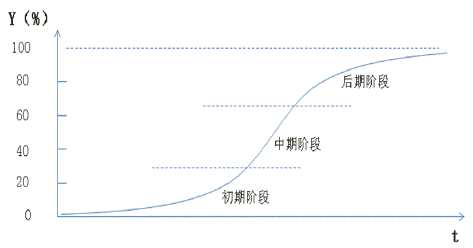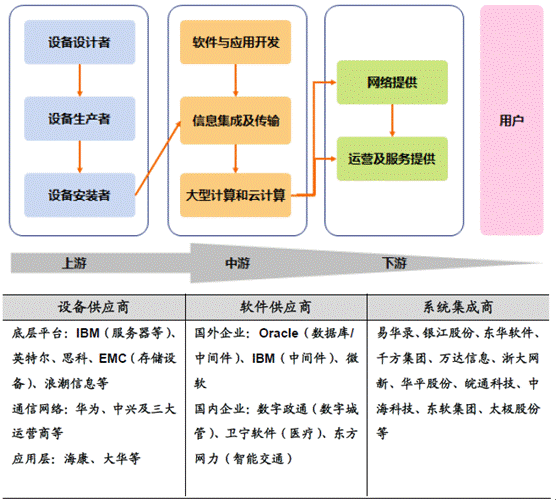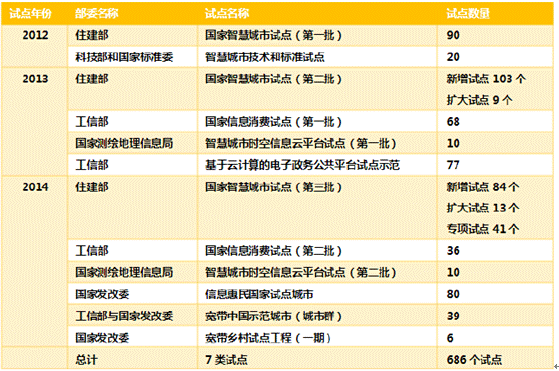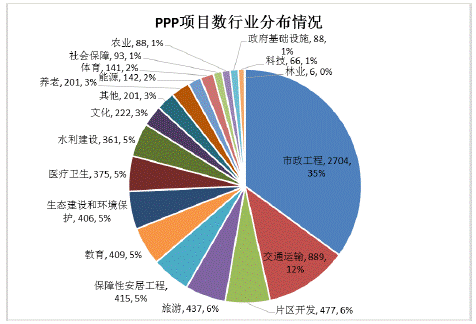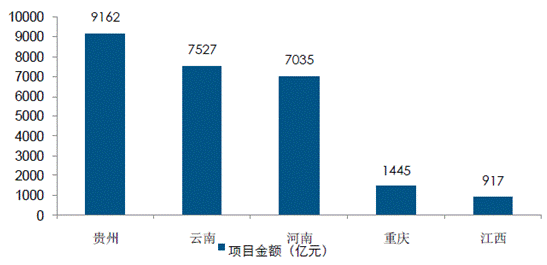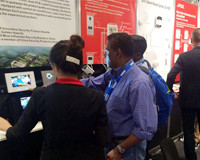In the past 30 years, China has experienced rapid urbanization. The urbanization rate has increased from 21% in 1983 to 54% in 2013, which means that China's urbanization has entered the middle and late stages. As the speed of urbanization construction is significantly higher than the level of social carrying capacity, the negative impact of urbanization in China is gradually emerging, and there are “urban diseases” such as traffic congestion and increased crime rates. It is urgent for the rise of smart cities through informationization to reduce the acceleration of urbanization. Management pressure.
Related Report: Research Report on the Operational Situation and Investment Strategy of China's Smart City Market in 2017-2022 Published by Zhiyan Consulting
Smart city is an inevitable choice for China's new urbanization development. Its construction is a very large system engineering, and there are a large number of upstream and downstream relations in the industrial chain. Roughly understand, we divide the smart city industrial chain into hardware equipment manufacturing, software and information services, system integration, operational services and other sub-fields and related participants through the sensing, transmission, calculation, and decision-making involved in smart cities:
First, the underlying facilities: hardware equipment and chip manufacturing, communication network transmission. Hardware devices are the infrastructure of smart cities and are the main investment part of smart cities. From the technical level, domestic equipment manufacturers mainly have certain cost advantages in communication and information collection, such as Huawei and Haikang, while the mainstream suppliers of core data processing equipment are still based on IBM, Cisco, EMC, Intel, etc. Representing an international leader.
Second, the software platform: software and information services. Software is the hub for the establishment of interconnections between hardware, and the proportion of total investment in smart cities can reach 10-20%. The basic software (including middleware, operating system, database, etc.) is mainly based on foreign brands represented by Oracle. In the upper application, smart cities involve a large number of functional modules, mainly based on domestic enterprise products, including digital urban management software product supply. Business Digital Political, Oriental Network in the field of urban security, Weining Software for medical services, etc.
Third, system integration. The construction of smart cities should make full use of the achievements of the original urban informatization construction, and integrate with communication technology and Internet of Things technology, involving a large number of system integration. Therefore, the construction of smart cities has brought important development opportunities and huge markets to the system integration industry. The system integration is basically a customized project. The participants are all large-scale integrated manufacturers in China, including Yihualu and Yinjiang, which are based on intelligent transportation, and Taiji shares cut into the top design. These larger companies have significant advantages in terms of financial strength, ability to provide total solutions, and after-sales services.
Fourth, operational services. Operational services are the late-stage market for smart city construction, and industry applications continue to extend vertically, generating demand for massive data processing and information management. Since operation and maintenance is an extension of system deployment, we believe that system integrators have natural advantages in the operation and maintenance service field. After the smart city construction is perfected, system integrators will be transformed into smart city operation service providers.
Smart city industry chain
China's Ministry of Housing and Urban-Rural Development, the National Development and Reform Commission, the Ministry of Industry and Information Technology and other important departments have participated in the pilot planning of smart cities. As of 2015, a total of 686 pilot cities have been planned. The pilot cities will be established after 3-5 years, and the Ministry of Housing and Urban-Rural Development will organize assessments. The pilot cities (districts and towns) are assessed, and the rating is divided into one star, two stars and Samsung from low to high, thus promoting the rapid development of the industry.
Nearly 700 pilot cities in China's smart cities
According to the existing disclosure orders of listed companies, the provincial administrative districts (such as Wuhan City plans to build smart cities total investment of 80 billion yuan within 10 years) usually have an investment quota of 100-500 billion yuan, prefecture-level cities (Yinjiang shares signed The total investment of wisdom Guanshan Lake is estimated to be 3 billion yuan. The usual investment amount is 10 to 3 billion yuan. At the district and county level (the wisdom of Zhangjiang, the total investment of Yinjiang is 260 million yuan, and the investment of wisdom Laixi is 500 million yuan. Wisdom Jinnan invests 700 million yuan, and wisdom Donghai project invests 300 million yuan. The investment quota is 150-500 million yuan. Therefore, we calculate according to the above-mentioned range. The total investment amount of smart cities in China is estimated to be 970-416 billion yuan.
Smart City Market Space Estimation (100 million yuan)

According to IDC, the investment related to smart city construction in the next 10 years will exceed 2 trillion yuan. Looking back at 2010, China's smart city investment has maintained a compound annual growth rate of 14.81%. We believe that with the help of PPP and other modes, the industry growth rate will maintain a rising trend. At the same time, with the increase of investment in the industry, the experience and financial strength of large projects will enhance the invisible barriers of the industry, and the concentration of the industry is expected to gradually increase, that is, the market expansion speed of listed companies will be significantly higher than the growth rate of the industry.
China's smart city investment scale (100 million yuan) and year-on-year growth rate
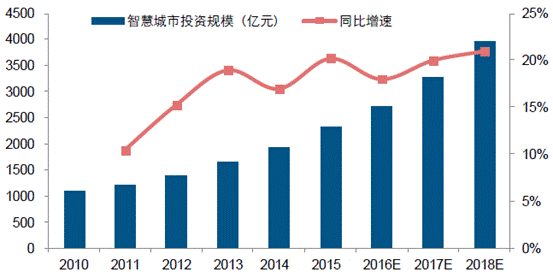
As can be seen from the “PPP Integrated Information Platform Project Library” of the Ministry of Finance, as of March 31, 2016, there were 7,721 projects reviewed and put into storage, with a total investment of 8.7 trillion yuan, and the number of projects increased in June. To 9285, the total investment was 10.6 trillion yuan, and the project landing rate increased from 32.7% to 49.4%.
The number of PPP projects in the finance department and the rising financial
The rate of landing of the PPP project of the Ministry of Finance is rising

The Ministry of Finance's warehousing project covers 19 first-level industries, among which the number of projects and investment in three projects, including municipal engineering, transportation, and district development, ranks among the top three, with the total number of projects accounting for 52.7% and the total investment amount accounting for 65.2%. In addition, the National Development and Reform Commission and the Ministry of Communications jointly issued the “Three-Year Action Plan for Major Construction of Transportation Infrastructure”, proposing to promote 303 railway, highway, waterway, airport and urban rail transit projects in 2016-2018, involving total project investment. About 4.7 trillion yuan, which contains huge PPP mode operation space.
Industry distribution of the number of PPP warehousing projects of the Ministry of Finance
Industry distribution of the amount of PPP warehousing projects of the Ministry of Finance
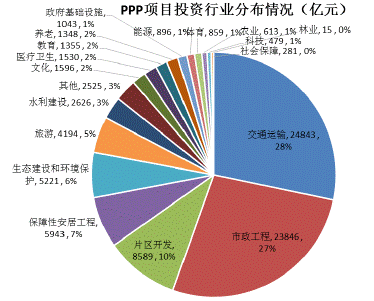
PPP maps to the TMT sector, and the foothold is the smart city industry. According to past construction experience, information investment generally accounts for 8%-12% of the total investment of the industry, so the tens of billions of PPP investment is in the smart city field. The amount of investment is also in the trillion scale, which coincides with the results of our calculations based on smart city orders from all over the world.
In the local financial PPP projects, the direction of smart cities has already emerged. For example, in October 2015, “Hefei High-tech Zone Smart City Management Operation Project” became a demonstration project in the local warehousing list; in January 2016, “Smart City and PPP financing peaks” The forum was held. The leaders of the Ministry of Housing and Urban-Rural Development, the Ministry of Finance, and the China Academy of Urban Sciences attended the meeting to promote the development of new industrial models. In July 2016, Chongqing concentrated on signing more than 130 billion yuan of PPP projects to add smart city projects.
It is particularly noteworthy that according to the geographical distribution of PPP project funds, the southwest region is an important deployment area. For example, at the end of January 2016, Guizhou planned 916.2 billion, Yunnan 752.7 billion, and Chongqing 144.5 billion (and Chongqing plans 2020 various foundations). The investment in facilities reached 1.8 trillion yuan, of which the central and local governments invested about 1 trillion yuan, and the other 800 billion yuan was raised through PPP, with an average annual implementation of about 130 billion yuan. Chengdu Branch is the largest branch of Tianxia Wisdom, radiating the southwestern advantageous areas such as Guizhou, Chengdu, Chongqing, Qinghai and Yunnan. We are optimistic about the prospects of PPP projects in the direction of smart cities in Chongqing, Guizhou and Sichuan, and the potential of the company. Order reserve.
Distribution of PPP projects in January 2016 in some regions (unit: 100 million yuan)


